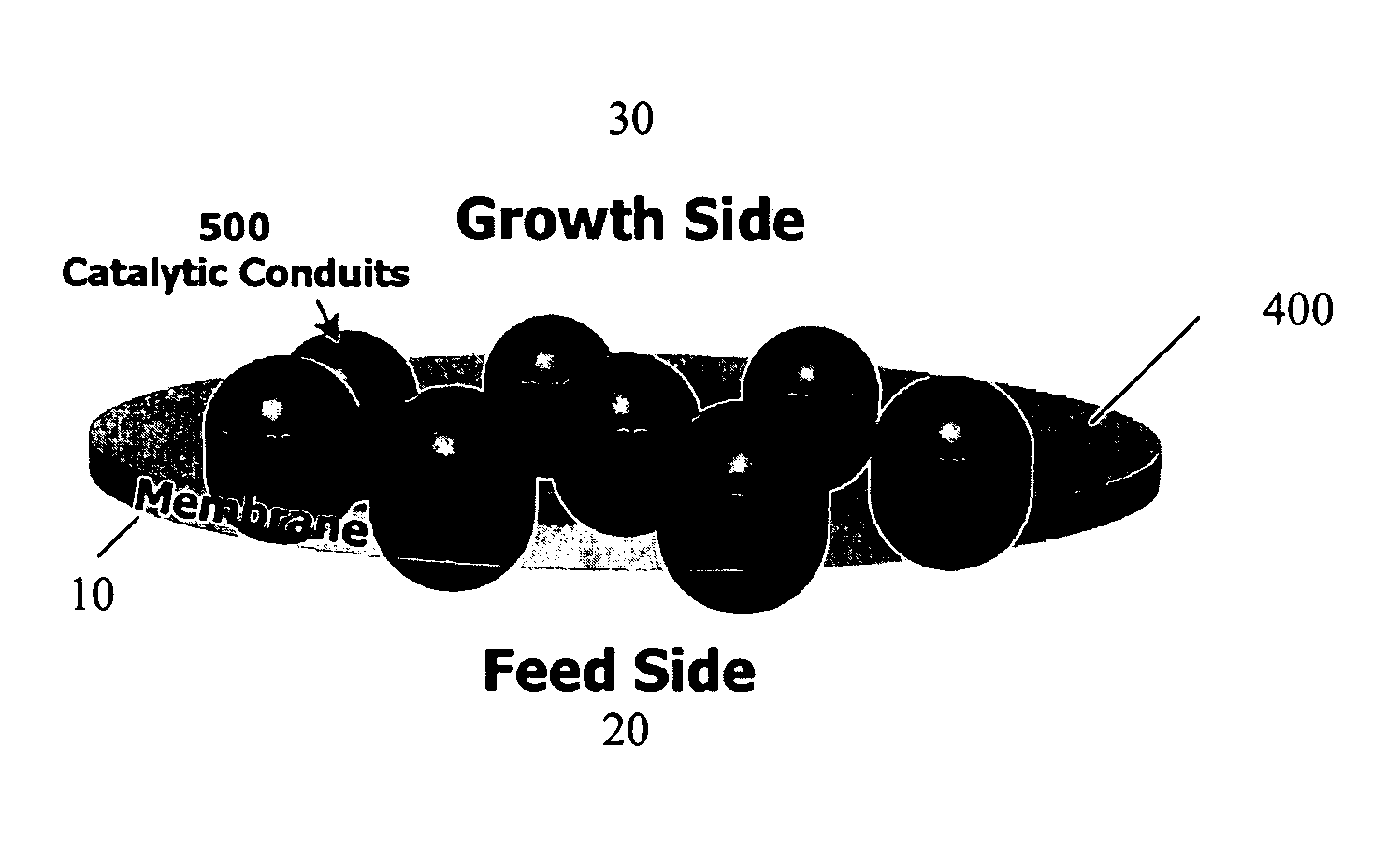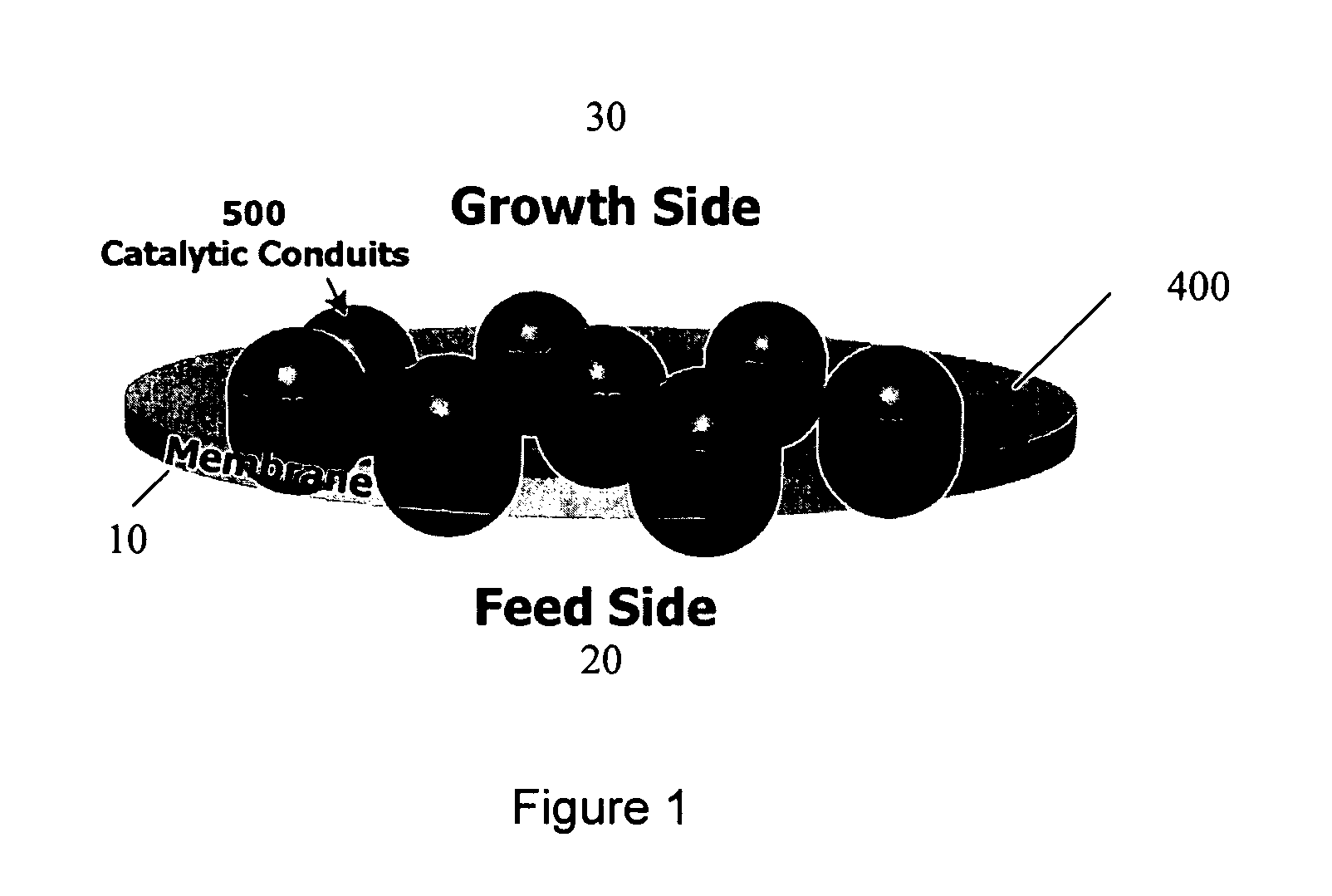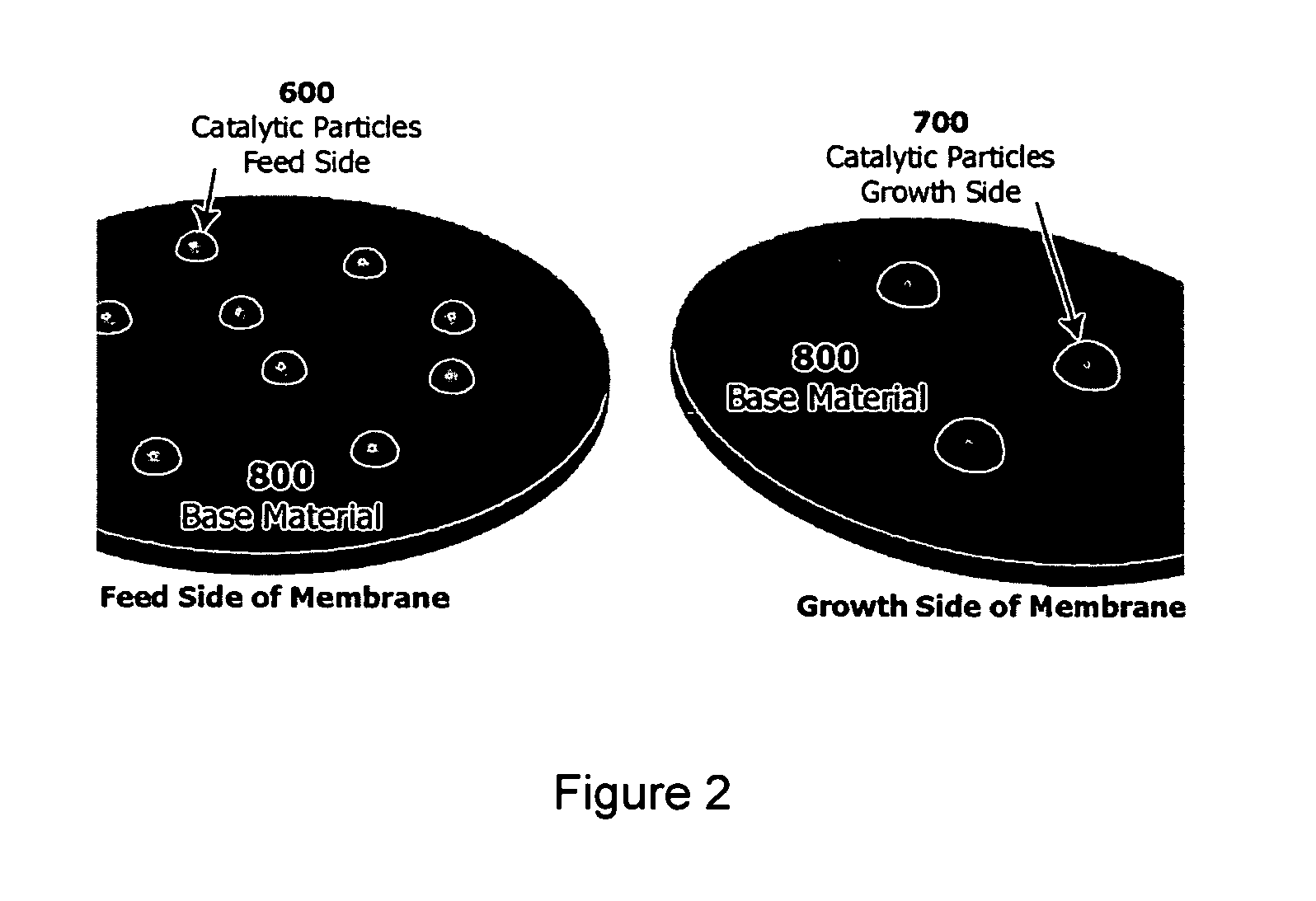Membrane separation of feed and growth environments in carbon nanostructure growth
a carbon nanotube and growth environment technology, applied in the direction of crystal growth process, polycrystalline material growth, chemically reactive gas, etc., can solve the problems of cost and time-consuming post-process purification, and achieve the effect of reducing mass transport limitations, high purity, and cost and time-consuming
- Summary
- Abstract
- Description
- Claims
- Application Information
AI Technical Summary
Benefits of technology
Problems solved by technology
Method used
Image
Examples
example
Formation of a Membrane for Growth of Multi-Walled Nanotubes
[0083]A template is formed by creating nanoholes in either a Mo metal foil or a silica material (thickness 0.25 micron to 1 micron). The nanoholes (pores) are 20 nm, 30 nm, or 40 nm in diameter and are formed with nanolithography.
[0084]A layer (a few nm to greater than 5 nm thick) of alumina is applied to the interior of the nanoholes and the faces of the template via atomic layer deposition.
[0085]A catalyst containing Fe, Ni, or Co is then inserted into the nanoholes, substantially filling them. Subsequently, a Mo film is applied to the feed side of the membrane.
PUM
| Property | Measurement | Unit |
|---|---|---|
| thickness | aaaaa | aaaaa |
| thickness | aaaaa | aaaaa |
| size | aaaaa | aaaaa |
Abstract
Description
Claims
Application Information
 Login to View More
Login to View More - R&D
- Intellectual Property
- Life Sciences
- Materials
- Tech Scout
- Unparalleled Data Quality
- Higher Quality Content
- 60% Fewer Hallucinations
Browse by: Latest US Patents, China's latest patents, Technical Efficacy Thesaurus, Application Domain, Technology Topic, Popular Technical Reports.
© 2025 PatSnap. All rights reserved.Legal|Privacy policy|Modern Slavery Act Transparency Statement|Sitemap|About US| Contact US: help@patsnap.com



